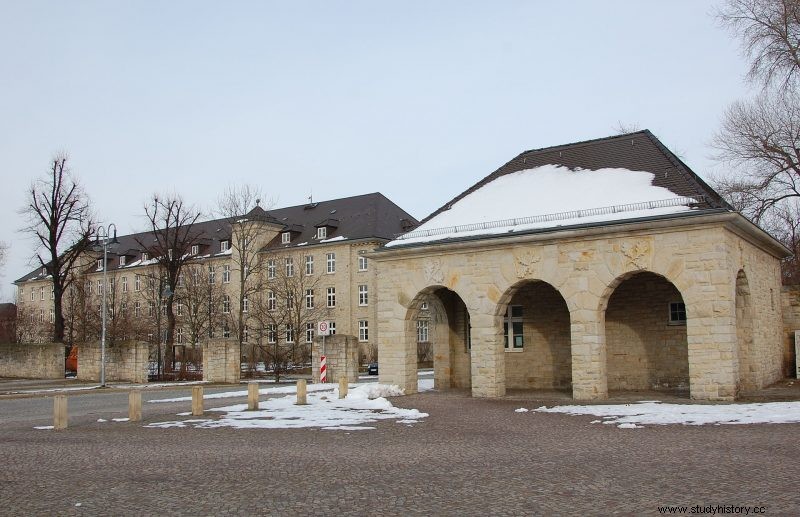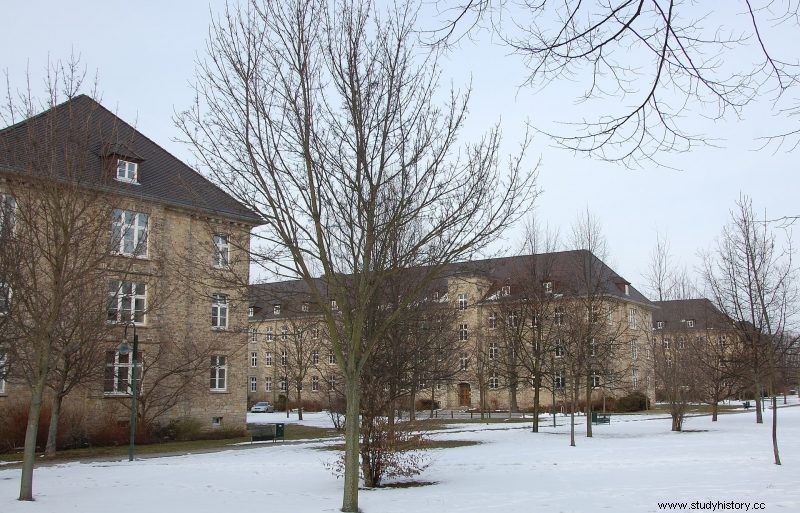Germany had been dispossessed of its armed forces after the First World War. According to Adolf Hitler, the Treaty of Versailles was one of the greatest humiliations for which Germany had to make amends. For this reason, the rearmament policy became one of the main axes of the National Socialist transforming action.

The 100,000 troops allowed by the Treaty of Versailles as a defensive force for Germany were quickly outnumbered. To house the new Wehrmacht troops, as well as their new vehicles and weapons, barracks were built across the country.
The Hindemburg Barracks in Magdeburg were one of these new facilities. The design of the barracks was entrusted to the famous architect Heinrich Tessenow, who had been a teacher of Hitler's favorite architect, Albert Speer.

The facilities had different buildings for the troops, workshops for the vehicles and testing and exercise fields for the soldiers. In 1936 the barracks were assigned to a motorized infantry unit, which became Panzer Grenadiers shortly after.
After World War II, Soviet and GDR troops continued to use the military facilities. Following the demise of East Germany, the building was restored and given over to public offices. The Magdeburg central tax office is located here today. The entire complex has been listed as heritage and is protected.
How to get to the Hindemburg barracks
The former Hindemburg barracks, today the Magdeburg tax office, are located to the east of the city. To get there you can take the tram to the Turmsch.-Str./Friedensbr. stop.
